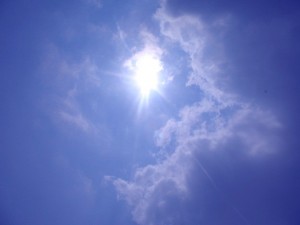Can LEDs help with vitamin D deficiency?
Posted on April 20, 2016
 Vitamin D deficiency continues to be a major issue globally. This issue has led people to develop various conditions such as osteoporosis, rickets and osteomalacia.
Vitamin D deficiency continues to be a major issue globally. This issue has led people to develop various conditions such as osteoporosis, rickets and osteomalacia.
The best way to maintain vitamin D levels at a sufficient level (above 50 ng/ml) is from the sun. This is because sunlight produces a certain type of vitamin D called D3 among many other important nutrients that are essential for our bodies.
It is recommended that people to spend 10 – 15 minutes in the sun a day. However, with people spending more time inside this is not often achievable. Also, in the shorter months, it is much easier to become deprived of sunlight it can be detrimental to their health and well being.
How can LED lighting help?
LED lighting has been known to have many benefits, such as plant growth, and rehabilitation for patients that have suffered brain injuries. It can also help with skin conditions such as acne. LEDs are also a useful source of vitamin D and light therapy is now used to combat various health conditions.
LED light therapy is beneficial because it can produce the same effects as sunlight that can replicate the sun’s healing properties. There is of course a concern for many that too much sunlight or light therapy from LEDs can have a detrimental affect leading to diseases like skin cancer. Yet, it is recommended that if the skin is exposed for 10 minutes under a UV LED, it can produce enough vitamin D that is equivalent to the right amount of sun exposure.
Of course sunlight is the best way to produce vitamin D, however if this is not possible, LEDs can be a great alternative for people concerned about vitamin D deficiency.
